Table of Contents
Tow surfing, also known as big wave surfing, is a heart-pounding variation of surfing where riders are towed into massive waves using a jet ski or boat. This exhilarating sport demands immense skill, courage, and physical strength, as surfers navigate towering waves that can reach heights of over 100 feet. Tow surfing has gained popularity in recent years, thanks to advancements in tow-in equipment and the daring exploits of professional surfers like Laird Hamilton and Garrett McNamara.
Windsurfing, Bodyboading, and Other Types of Surfing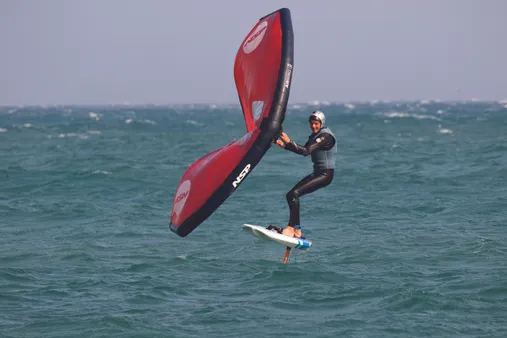
I. Surfing: A Thrilling Water Sport and Its Diverse Variations
Surfing: A Thrilling Water Sport and Its Diverse Variations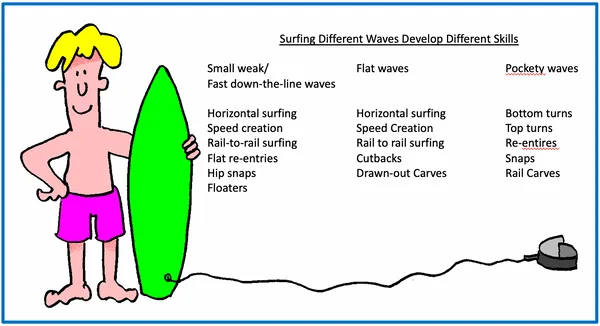
Surfing is a thrilling water sport that has captivated the hearts of adventurers worldwide. Beyond the traditional stand up paddle boarding (SUP), there exists a diverse range of surfing styles, each offering unique experiences and challenges. From the adrenaline-pumping rush of tow surfing and kite surfing to the graceful flow of flow riding and the raw excitement of bodysurfing, there's a surfing style for every thrill-seeker. Join us as we dive into the captivating world of SUP and its alternative forms, exploring the distinctive characteristics, benefits, and challenges of each. Whether you're a seasoned pro or just starting your surfing journey, discover the perfect way to ride the waves that resonates with your spirit of adventure.
Tow Surfing: Riding the Monster Waves
Tow surfing, also known as big wave surfing, is a heart-pounding experience reserved for the most daring surfers. This exhilarating style involves being towed into massive waves by a jet ski or boat, allowing surfers to tackle waves that would otherwise be impossible to catch. Tow surfing demands exceptional skill, courage, and physical fitness, as surfers must navigate treacherous conditions and towering waves that can reach heights of over 100 feet. If you're seeking the ultimate adrenaline rush, tow surfing is the ultimate challenge.
- Tow surfing pushes the limits of human capability.
- It requires specialized equipment and a skilled team.
- Safety is paramount, with spotters and rescue personnel on standby.
Kite Surfing: Harnessing the Power of the Wind
Kite surfing, a captivating blend of surfing and kiteboarding, combines the thrill of riding waves with the exhilaration of harnessing the wind's power. Surfers use a large kite to propel themselves across the water, soaring over waves and performing spectacular jumps and tricks. Kite surfing offers a unique perspective of the ocean, as riders glide effortlessly above the surface, dancing with the wind and waves. This dynamic sport requires coordination, balance, and a deep understanding of wind dynamics.
Item | Description |
Kite | Large, inflatable kite that generates lift and propulsion. |
Board | Specialized surfboard designed for kite surfing. |
Harness | Attaches the rider to the kite, providing control and safety. |
Lines | Connect the kite to the harness, allowing the rider to steer and maneuver. |
Flow Riding: The Art of Endless Waves
Flow riding, also known as artificial surfing, offers a controlled and consistent surfing experience. Surfers ride on a stationary wave generated by a powerful water jet, allowing them to practice their skills and hone their technique in a safe and predictable environment. Flow riding is an excellent option for beginners looking to learn the basics of surfing without the challenges of the ocean. It also provides a fun and accessible way for experienced surfers to improve their skills and try new maneuvers.
- Flow riding provides a safe and controlled environment for learning.
- It allows surfers to practice specific maneuvers and techniques.
- Flow riding facilities can be found in many cities and resorts.
Bodysurfing: The Purest Form of Surfing
Bodysurfing, the most basic and primal form of surfing, involves riding waves using only your body. Without the aid of a surfboard, bodysurfers rely on their physical strength, agility, and timing to catch and ride waves. This exhilarating sport demands a deep connection with the ocean and an intimate understanding of wave dynamics. Bodysurfing offers a raw and unadulterated surfing experience, allowing riders to feel the full force and power of the waves.
Technique | Description |
Duck Diving | Diving under waves to avoid being swept away. |
Turtle Roll | Rolling forward to avoid being caught inside a wave. |
Bottom Turn | Turning the body to gain speed and direction. |
Cutback | Turning the body sharply to change direction. |
Whether you're drawn to the adrenaline-fueled excitement of tow surfing, the graceful flow of flow riding, the raw power of bodysurfing, or the harmonious blend of wind and waves in kite surfing, there's a surfing style that will ignite your passion for this exhilarating water sport. Embrace the challenge, feel the thrill, and discover the joy of riding the waves in all its diverse forms.
To delve deeper into the world of surfing and its captivating variations, explore our comprehensive guides on each style. From choosing the right equipment to mastering the basic techniques, our insights will help you unlock the full potential of surfing and create unforgettable experiences on the waves.
- How to Choose the Right Surfboard
- Benefits of Surfing for Fitness and Fun
- Best Surfing Equipment and Accessories
II. Exploring the World of Surfing: From Traditional to Contemporary Styles
Exploring the World of Surfing: From Traditional to Contemporary Styles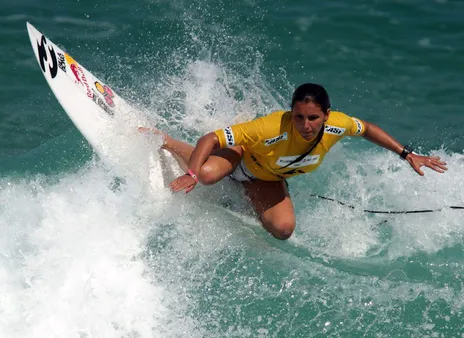
Surfing has evolved from a traditional Hawaiian pastime to a globally recognized water sport with a diverse range of styles and disciplines. Whether you're a seasoned pro or just starting out, there's a surfing style that caters to your unique preferences and skill level. In this comprehensive guide, we'll take you on a journey through the captivating world of surfing, exploring the history, techniques, and equipment used in various surfing styles.
Let's dive in and discover the different ways to ride the waves!
Traditional Surfing: The Roots of the Sport
Traditional surfing, also known as longboarding, is where it all began. With roots deeply embedded in ancient Hawaiian culture, longboarding emphasizes grace, balance, and a deep connection with the ocean. Longboards, typically ranging from 9 to 12 feet in length, offer stability and glide, making them ideal for beginners and those who enjoy a relaxed surfing experience.
Explore the rich history of longboarding and learn how to master the art of wave riding with our in-depth guide to traditional surfing: The History and Culture of Surfing
Location | Known For |
Makaha Beach, Hawaii | Long, rolling waves perfect for longboarding |
Malibu, California | Gentle waves and consistent breaks for beginners |
Byron Bay, Australia | World-class point breaks and stunning scenery |
Shortboard Surfing: Maneuvers and Exhilaration
Shortboard surfing, characterized by shorter, more maneuverable boards, is the epitome of high-performance surfing. With their increased agility and responsiveness, shortboards allow surfers to execute radical maneuvers, aerial tricks, and lightning-fast turns.
Looking to step up your surfing game and push the boundaries of what's possible on a wave? Delve into the world of shortboard surfing and learn how to perform jaw-dropping maneuvers with our comprehensive guide: The Best Surfing Exercises and Workouts
- Backside 360: A full rotation of the body while facing the wave
- Tube Riding: Riding inside the hollow part of a breaking wave
- Floater: Gliding along the surface of the wave without sinking
Stand Up Paddleboarding (SUP): A Unique Surfing Experience
Stand up paddleboarding (SUP) combines elements of surfing, kayaking, and rowing into a unique and versatile water sport. With a longer, wider board and a paddle for propulsion, SUP allows surfers to explore calmer waters, rivers, and even lakes.
Discover the tranquility and versatility of SUP and find out how it can enhance your surfing experience: How to Choose the Right Surfboard for Your Skill Level and Style
“SUP allows you to connect with the water in a way that traditional surfing doesn't. It's more relaxing and accessible, yet still challenging and rewarding.” - Emily Erickson, SUP enthusiast
Other Surfing Styles: A World of Diversity
The world of surfing extends far beyond traditional, shortboard, and SUP surfing. From the adrenaline-pumping thrills of tow surfing and kite surfing to the graceful flow of flow riding and the raw excitement of bodysurfing, there's a surfing style for every thrill-seeker.
- Tow Surfing: Using a jet ski to tow surfers into massive waves
- Kite Surfing: Harnessing the power of the wind with a kite to propel a surfboard
- Flow Riding: Surfing on a stationary wave generated by a machine
- Bodysurfing: Riding waves without a board, using only the body
Competition | Location |
World Surf League (WSL) Championship Tour | Various locations around the world |
Vans Triple Crown of Surfing | North Shore, Oahu, Hawaii |
Quiksilver Pro France | Hossegor, France |
Surfing offers an incredible range of styles and disciplines, catering to surfers of all skill levels and preferences. From the graceful glide of a longboard to the high-flying maneuvers of a shortboard, and the unique experiences of SUP and alternative surfing styles, there's a wave out there waiting for you to ride it. Embrace the thrill, catch the next swell, and let the ocean be your playground!
III. Surfing's Global Reach: Embracing Waves Across Continents
Surfing's Global Reach: Embracing Waves Across Continents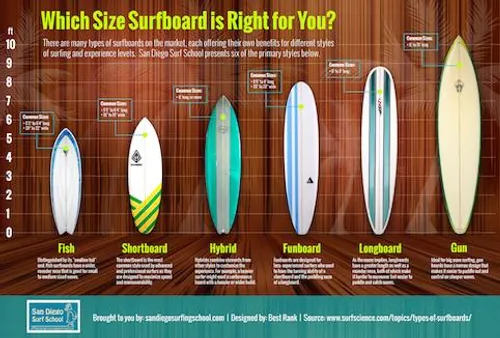
Surfing, a thrilling water sport that has captured the hearts of adventurers worldwide, has witnessed a remarkable global expansion. From the sun-drenched shores of California to the rugged coastlines of Australia, surfers are riding the waves, embracing the ocean's embrace, and pushing the boundaries of this exhilarating sport.
The United States stands as a surfing powerhouse, boasting iconic destinations such as Malibu, Huntington Beach, and Oahu's North Shore. These legendary spots attract surfers from every corner of the globe, drawn by their consistent swells and challenging conditions. But the surfing scene is not confined to these well-known havens; it extends far and wide.
Country | Surfing Destination |
|---|---|
Australia | Gold Coast, Bondi Beach, Margaret River |
Brazil | Rio de Janeiro, Florianópolis, Salvador |
Portugal | Peniche, Ericeira, Sagres |
Australia, long renowned for its diverse surf breaks, continues to be a surfing mecca. The Gold Coast in Queensland, with its endless stretch of sandy beaches, is a surfers' paradise.
Venturing further, surfers find solace in the pristine waters of Brazil. From the bustling beaches of Rio de Janeiro to the laid-back vibes of Florianópolis, Brazil's surfing culture is thriving. And let's not forget Portugal, a rising star in the surfing world. With its Atlantic coast boasting consistent waves and stunning scenery, Portugal has become a surfer's haven.
Surfing has transcended geographical boundaries, becoming a unifying force that brings people together. Surfers from different cultures and nations gather at these surfing hotspots, sharing stories, techniques, and the pure joy of riding the waves, creating a sense of camaraderie and belonging.
The global reach of surfing is not just limited to popular destinations; it's also expanding to lesser-known gems. From the remote shores of Nicaragua to the rugged coastlines of Morocco, surfers are discovering new frontiers, pushing the limits of the sport, and inspiring others to embrace the surfing lifestyle.
This global surfing movement has led to the rise of international surfing competitions, such as the World Surf League Championship Tour, where surfers from around the world compete for the title of world champion. These events showcase the incredible talent and athleticism of surfers, while also promoting the sport and its positive impact on coastal communities.
- Surfing Competitions:
- World Surf League Championship Tour
- International Surfing Association World Surfing Games
- Big Wave World Tour
Surfing's global expansion has contributed to the growth of the surfing industry. Surfboard manufacturers, apparel brands, and surf schools have emerged, catering to the growing number of surfers worldwide. This economic impact has brought prosperity to coastal communities, creating jobs and supporting local economies.
However, the global surfing boom also brings challenges that need to be addressed. Overcrowding at popular surf spots can lead to conflicts and safety concerns. Environmental issues, such as pollution and climate change, pose threats to marine ecosystems and coastal habitats that surfers rely on.
To ensure the sustainable growth of surfing, surfers and stakeholders must work together to protect the oceans and coastlines, promote responsible surfing practices, and support initiatives that address these challenges. By preserving the beauty and health of our oceans, we can continue to enjoy the thrill of surfing for generations to come.
IV. Related Posts:
- The Top Surfing Competitions and Events
- How to Choose the Right Surfboard for Your Skill Level and Style
- The Best Surfing Equipment and Accessories
V. The Future of Surfing: Innovation and Environmental Stewardship
The Future of Surfing: Innovation and Environmental Stewardship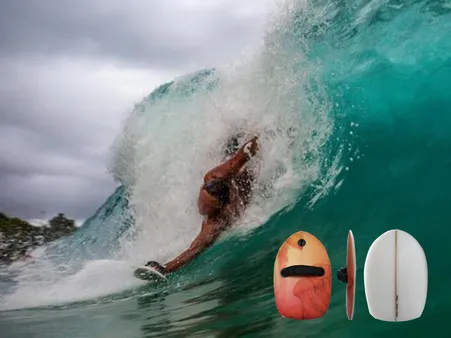
The world of surfing is constantly evolving, with new innovations and technologies emerging all the time. From high-tech surfboards and wetsuits to eco-friendly surf wax and sustainable surfwear, the surfing industry is at the forefront of innovation. At the same time, surfers are increasingly becoming aware of the environmental impact of their sport and are taking steps to reduce their carbon footprint.
One of the most exciting developments in the surfing world is the rise of new materials and technologies that are making surfboards lighter, stronger, and more responsive than ever before. These new materials, such as carbon fiber and epoxy resin, are allowing surfers to push the limits of what is possible on a surfboard, and are helping to create a new generation of high-performance surfboards.
Another area of innovation in the surfing industry is the development of new wetsuits that are more flexible, comfortable, and warm than ever before. These new wetsuits are made from high-tech materials that allow surfers to move more freely and stay comfortable in even the coldest waters. They are also helping to extend the surfing season, allowing surfers to surf all year round.
- Related Post: Equipment to Help Improve Surfing Skills
- Related Post: 5 Best Surfboards for Beginners
In addition to new materials and technologies, the surfing industry is also seeing a growing trend towards sustainability. Surfers are becoming increasingly aware of the environmental impact of their sport, and are taking steps to reduce their carbon footprint. This is leading to the development of new eco-friendly surf waxes, sustainable surfwear, and even electric surfboards.
The future of surfing is bright. With new innovations and technologies emerging all the time, and a growing awareness of the environmental impact of surfing, the sport is poised for continued growth and popularity.
Here are some specific examples of how surfers are working to reduce their environmental impact:
- Using eco-friendly surf wax.
- Wearing sustainable surfwear made from recycled materials.
- Choosing to surf at beaches that are free of pollution.
- Volunteering to clean up beaches and coastal areas.
Surfers can also help to reduce their environmental impact by choosing to buy products and services from companies that are committed to sustainability. This includes buying surfboards, wetsuits, and other surfing gear from companies that use sustainable materials and manufacturing practices. It also includes choosing to surf at resorts and beaches that are committed to protecting the environment.
The surfing industry is also playing a role in reducing the environmental impact of the sport. Many surf companies are now using recycled materials and sustainable manufacturing practices in order to create their products. They are also working with environmental organizations to help protect coastal ecosystems and marine life.
The future of surfing is bright. With new innovations and technologies emerging all the time, and a growing awareness of the environmental impact of surfing, the sport is poised for continued growth and popularity. Surfers are also increasingly becoming aware of their role in protecting the environment, and are taking steps to reduce their carbon footprint. This is a positive trend that will help to ensure that future generations can enjoy the sport of surfing.
VI. Conclusion
As you explore the exciting world of stand up paddle boarding and its captivating alternatives, remember that the choice of surfing style is a personal journey. Embrace the opportunity to experiment, learn, and grow as you navigate the different waves and challenges that each discipline presents. Whether you seek the exhilarating rush of riding giant waves, the serene flow of gliding along the water's surface, or the pure joy of connecting with the ocean in its many forms, there's a surfing style out there that will ignite your passion and leave you craving for more. So, grab your board, embrace the adventure, and let the ocean be your playground.